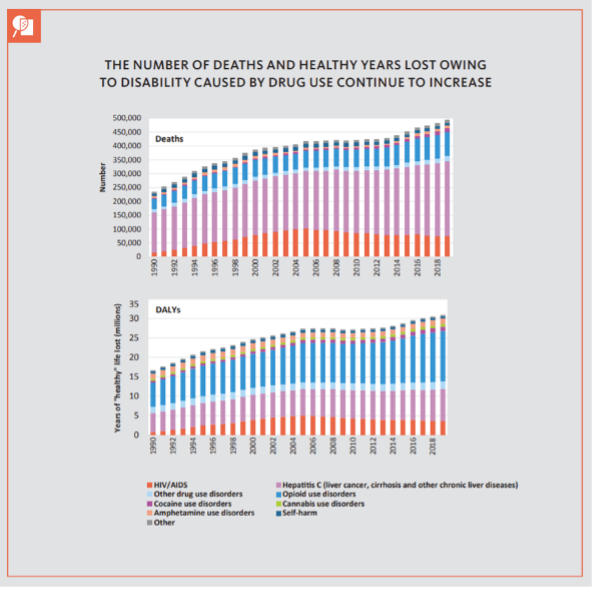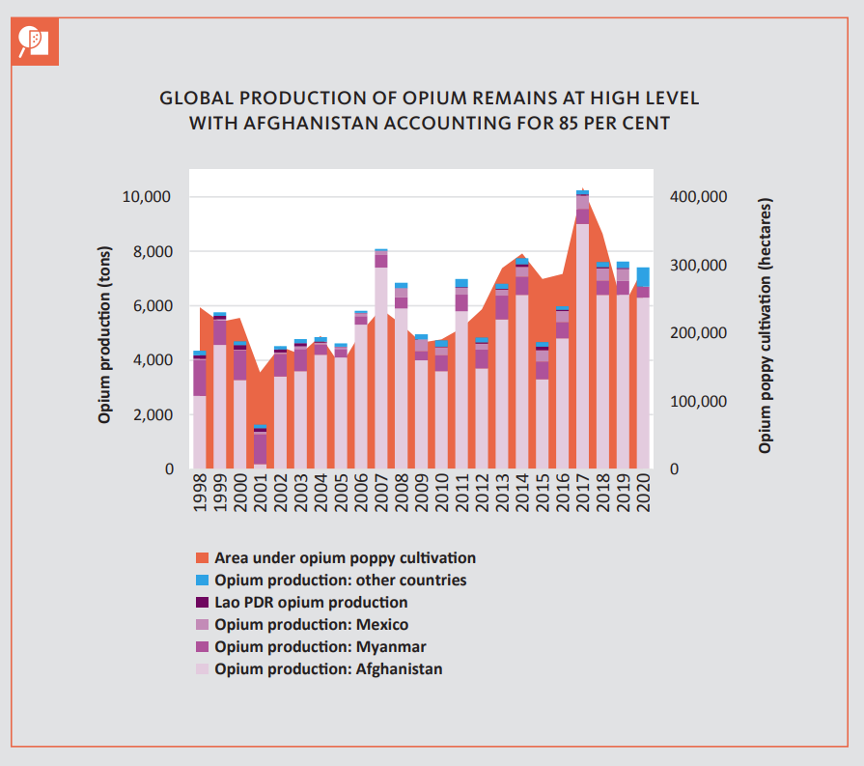By Charalampos Karouzos,
“[…] Modern life, too, is often a mechanical oppression and liquor is the only mechanical relief. Let me know if my books make any money and I will come to Moscow, and we will find somebody that drinks and drink my royalties up to end the mechanical oppression”.
Ernest Hemingway in 1935, almost 20 years before he received his Nobel Prize in Literature, stated that a manner to combat the harsh everyday life, the mechanical oppression as he said, was liquor. Alcohol and its psychoactive CNS (Central Nervous System) depressing abilities are not newly discovered, humanity for centuries used alcohol to enjoy an altered state of consciousness escaping the problems of today. Along with alcohol, other substances have been used by people for recreational purposes for centuries. Ancient civilizations knew and used the hallucinating or pain-relieving properties of certain substances either for medical purposes or for recreation and religious ceremonies. Particularly nowadays, the global crisis we are experiencing forces drastic socio-economic changes and challenges our previously known status quo. The plethora of unstable factors in our everyday life drives people to the need of releasing all this pressure by using recreational drugs as relief valves.


To begin, recreational drugs must be explained. The term “recreational drugs” is unspecific and misleading. Under this umbrella term, many substances are listed from the casually used ethanol (alcohol) to stronger highly illegal substances like heroin. Also, how can an enslaving addictive substance that constrains the life of the user to be ever associated with recreation, “the refreshment of strength and spirits after work”? Nothing could be further from the truth. So, illicit substances abused, are subdivided into four categories: analgesics, depressants, stimulants, and hallucinogens. The main substances abused in the category of analgesics (pain-relieving medication) include narcotics like heroin, morphine, fentanyl, and codeine. Regarding depressants people very commonly use alcohol and nicotine with barbiturates, and tranquilizers having a secondary role. The family of stimulants mainly includes cocaine, methamphetamine, and ecstasy (MDMA). Finally, hallucinogens that have a very powerful effect on the user include briefly LSD (acid), psilocybin (magic mushrooms), cannabis, ketamine, and phencyclidine (PCP).




A fundamental question, however, has remained unanswered. Why do people actually use drugs? The answer is very simple, drugs do work immaculately. People feeling stressed or emotionally challenged can radically change their mindset and feel better at the moment, however, although one may experience recreation instantaneously, one has to be aware of the life-threatening and severely addictive properties he/she is using. Drug use killed almost half a million people in 2019, while substance-use disorders (SUD) resulted in 18 million years of healthy life lost, mostly due to opioids. Serious and many times lethal conditions are common among drug users, specifically those that administer drugs intravenously (using needles), that have a greater risk of being HIV and Hepatitis C positive, mainly due to the usage of infected syringes. At the same time, the available FDA-approved medication treatment options against illicit substances, apart from heroin addiction, rely only on behavioral therapies, which can be effective, but with minimal effect in comparison to medication therapy.


The pandemic period was, and still is causing drastic changes to our everyday lives, with its full ramifications yet to be seen. People, in order to manage under such a pressure load, used substances that help them let some of their problems on the side temporarily. Numerous studies have shown that there is a significant increase in alcohol consumption among previous consumers (before the pandemic) of 20-30% and for previous drug consumers, the increase rises to 30-35%. In fact, younger adults, compared to older individuals, tended to have higher levels of alcohol and drug use and abuse. Additionally, COVID stress syndrome, which is the constant fear of becoming ill from the SARS-COV-2 virus, has been clearly linked with increased substance abuse. Certain groups are known prior to be at risk of SUDs like the homeless populace, migrant workers, prisoners, marginalized communities, and medical students and residents are at greater risk of both increased substance abuse and getting infected.


Furthermore, increased access to the substances especially during the lockdown period drove more people to use them. Firstly, most countries that were in quarantine made alcohol radically available either through supermarkets or liquor stores being characterized as “essential” stores and remaining open. Also, countries like the Netherlands, where cannabis usage is legal, experienced a different situation as reporters in Euronews stated; “When the Netherlands first locked down in March 2020, there were scenes of “weed panic” with long queues outside coffee shops, the Dutch term for cannabis cafes”. Regarding illegal substances, the low cost of a dose due to the expansion of the drug market has made the economic obstacle easy to pass. Furthermore, nowadays access to drugs has become much easier due to the rise of online black markets in the dark web and social media accounts, speculated to make sales around $315 million annually, in recent years. In addition, the pandemic forced illegal drug traffickers to improve the drug delivery system with an increasing number of contactless and through-mail drug transactions.


People in fact, according to data obtained from a survey I conducted, asking my social circle to answer specific questions regarding drug usage before and after the lockdown period, reveal that individuals who consumed drugs like alcohol beforehand in a regular manner experienced an increase in their consumption. On the other hand, people that only used drugs socially (social drinkers/smokers) experienced a sharp decrease in their usage. In addition, impressive was the diversity of opinions regarding individuals’ beliefs about drug usage. Answers were found throughout the spectrum of the possible policies regarding drug regulation, ranging from a universal ban to complete decriminalization. The minority of the answers suggested a more middle-ground approach, with most answers being extremely polarized, and leaving little room for further discussion.


Concludingly, drugs have been part of human history from the primary modern societies and are present still. People due to their addictive properties and the addiction of relief they offer will be using them suppose policies and procedures are not brought forward to counteract their expansion. A great number of lives are at risk due to the abuse which creates further social and economic inequalities, enhancing the vicious cycle of addictive drugs. Protecting the human rights of people who use drugs and reducing stigma, discrimination and inequality must remain key objectives if public health outcomes are to be optimized during the current and future pandemics.
References
- What are recreational drugs?, bmj.com. Available here
- World Drug Report 2021, unodc.org, Available here
- Global health estimates: Leading causes of death, who.int, Available here
- Drug scheduling, dea.gov, Available here
- Commonly used drug charts, nida.nih.gov, Available here
- The drug facts, drugfreeworld.org, Available here
- Dutch cannabis cafes see rise in business during COVID-19 pandemic, euronews.org, Available here
- Happy plants and laughing seeds: How people used (and abused) drugs in Ancient Greece and Rome. historyextra.com. Available here
- Ritual and religious drug use in Ancient Greece. hellenic.org.au. Available here




